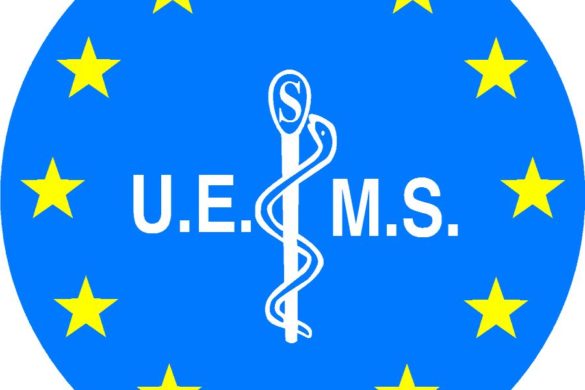Abstract:
Background: Postanoxic status epilepticus (PSE) is considered a predictor of fatal outcome and therefore not intensively treated; however, some patients have had favorable outcomes. The aim of this study was to identify favorable predictors for awakening beyond vegetative state in PSE.
Methods: We studied six subjects treated with hypothermia improving beyond vegetative state after cerebral anoxia, despite PSE. They were among a cohort of patients treated for anoxic encephalopathy with therapeutic hypothermia in our institution between October 1999 and May 2006 (retrospectively, 3/107 patients) and June 2006 and May 2008 (prospectively, 3/74 patients). PSE was defined by clinical and EEG criteria. Outcome was assessed according to the Glasgow-Pittsburgh Cerebral Performance Categories (CPC).
Results: All improving patients had preserved brainstem reflexes, cortical somatosensory evoked potentials, and reactive EEG background during PSE. Half of them had myoclonic PSE, while three had nonconvulsive PSE. In the prospective arm, 3/28 patients with PSE showed this clinical-electrophysiologic profile; all awoke. Treatments consisted of benzodiazepines, various antiepileptic drugs, and propofol. One subject died of pneumonia in a minimally conscious state, one patient returned to baseline (CPC1), three had moderate impairment (CPC2), and one remained dependent (CPC3). Patients with nonconvulsive PSE showed a better prognosis than subjects with myoclonic PSE (p = 0.042).
Conclusion: Patients with postanoxic status epilepticus and preserved brainstem reactions, somatosensory evoked potentials, and EEG reactivity may have a favorable outcome if their condition is treated as status epilepticus.
Rossetti AO, Oddo M, Liaudet L, Kaplan PW. Neurology. 2009 Feb 24;72(8):744-9.
Comment by Giuliano Avanzini
The neurologic prognosis for post-anoxic coma has long been based mainly on the algorithms of Levy et al [1985] which derive from a single cohort study.
In 2006 the Quality Standards Subcommittee of the American Academy of Neurology reviewed the studies published from 1966 to 2006 that explored the prognostic value of the clinical examination and of electrophysiologic, biochemical, and radiologic investigations for comatose survivors after cardiopulmonary resuscitation. This evidence based review, concludes that, among the examined variables, myoclonic status is associated with severe disability in surviving patients and support the current attitude of avoiding aggressive treatment of post-anoxic myoclonic status namely when it occurs early after cardiac arrest. However occasional observations had been reported with good recovery [Arnoldus et al 1995, Hui et al 2005, Wijdicks et al 2006]. Therefore it is particularly important to identify good outcome predictors of postanoxic status epilepticus that can provide criteria to identify the patients with favourable prognosis who deserve an early intensive treatment. The lack of systematic studies on which prognostic criteria could be based prompted the authors to analyze a cohort of patients treated for anoxic encephalopathy at the Centre Hospitalier Universitaire Vaudois of Lausanne. Three out of 107 patients retrospectively analyzed and 3 out of 74 patients followed prospectively, were included. All were treated with hypothermia for the postanoxic encephalopathy and with antiepileptic drugs for the status epilepticus. Outcome was assessed at 6 months or until the last possible patient contact. Impairment of neurologic and cognitive performances was categorized according to the Glasgow-Pittsburgh Cerebral Performance Categories (CPC), which includes 5 grades, grade 1 corresponding to minimal impairment, and grade 5 to death [Teasdale and Jennett 1964]. Four out of six patients of the present series improved to CPC of 2 or less and were therefore considered to have had a favourable outcome. Notably one of them had full recovery and resumed his previous professional activity (CPC 1). Of the two other patients one showed at the six month control a severe cognitive impairment though able to walk and was therefore classified CPC 3 and the other died 18 days after CA following extracerebral organ dysfunction (severe sepsis due to pneumonia), although neurologically he improved 1 week before his death from vegetative to minimally conscious state.
Interestingly three patients had no motor manifestations (no myoclonic status) and the diagnosis of status epilepticus was made by EEG. Overall patients with nonconvulsive Status Epilepticus showed a better prognosis than subjects with myoclonic Status Epilepticus, however one patient with myoclonic status epilepticus, diagnosed as Lance-Adams syndrome had the best outcome (CPC grade 1) and one patient with non convulsive status had severe outcome (CPC grade 3).
Based on their own retrospective case series and on the data reported in the literature the authors consider the percentage of patients with good outcome rather satisfactory and attribute it to the treatment with hypothermia. According to the protocol currently employed at the University Hospital of Lausanne, mild hypothermia to 33°C was induced on hospital arrival with external cooling and maintained for 24 hours; midazolam, fentanyl and vecuronium were administered for sedation and elimination of muscular shivering. Passive rewarming was undertaken afterward, targeting a core temperature <37.5°C; this typically takes 6 to 12 hours. Neurologic evaluations were performed as soon as possible after rewarming, at a core temperature >35°C, and off sedation, and at least 36 hours after cardiac arrest. It included observation for spontaneous movements, testing of principal brainstem reflexes and assessment of motor response to vigorous arousal stimuli. At least one EEG was digitally recorded for 20–30 minutes in all analyzed patients; auditory, visual, and nociceptive stimulations were performed by a physician during the acquisitions. Cortical somatosensory evoked potentials (SSEP) were recorded by stimulation of both median nerves.
In patients with bilaterally absent cortical SSEP and brainstem reflexes, a decision to withdraw supportive care was made by the interdisciplinary team. All patients with PSE were treated with antiepileptic drugs single or in combination for at least 24 hours, and in selected cases, propofol, targeting an electrographic burst-suppression pattern for 24 hours. Supportive care was discontinued if no clinical improvement was noted after 48–72 hours following CA.
The results lead the authors to conclude that preserved brainstem reflexes, preserved cortical somatosensory evoked potentials and EEG background reactivity are positively correlated with improvement beyond vegetative status.
The results of this study are particularly interesting because of the large experience of the authors and the completeness of the study as both the considered parameters and the prospective outcome evaluation six months after hospital discharge. As acknowledged by the authors the results are based on a limited patient population and should be considered as preliminary to future multicenter studies. Moreover since intensive care was withdrawn in patients with no brainstem reflex and bilaterally absent SSEP after rewarming a selection bias has to be taken into account.
In spite of these limitations the study has the important merit of stressing the need of an integrated approach to postanoxic encephalopathy that should involve neurologists, neurophysiologists and intensivists, something that is not always and everywhere practiced. Moreover it highlights the importance of the neurophysiological evaluation that provides predictors of favourable outcome thus identifying candidates to an early aggressive therapeutic approach.References:
1. Arnoldus EP, Lammers GJ. Postanoxic coma: good recovery despite myoclonus status. Ann Neurol 1995;38:697–698.
2. Hui AC, Cheng C, Lam A, Mok V, Joynt GM. Prognosis following Postanoxic Myoclonus Status epilepticus. Eur Neurol 2005;54:10–13.
3. Levy DE, Caronna JJ, Singer BH, et al. Predicting outcome from hypoxic-ischemic coma. JAMA 1985;253:1420–1426.
4. Teasdale G, Jennett B. Assessment of coma and impaired consciousness: a practical scale. Lancet. 1974; 2:81-84.
5. Wijdicks EF, Hijdra A, Young GB, Bassetti CL, Wiebe S. Practice parameter: prediction of outcome in comatose survivors after cardiopulmonary resuscitation (an evidence-based review): report of the Quality Standards Subcommittee of the American Academy of Neurology. Neurology 2006;67:203–210.
Giuliano Avanzini is Professor of Neurology at the Universita Cattolica del Sacro Curore in Milan, Italy and member of the EFNS Scientist Panel on Epilepsy







